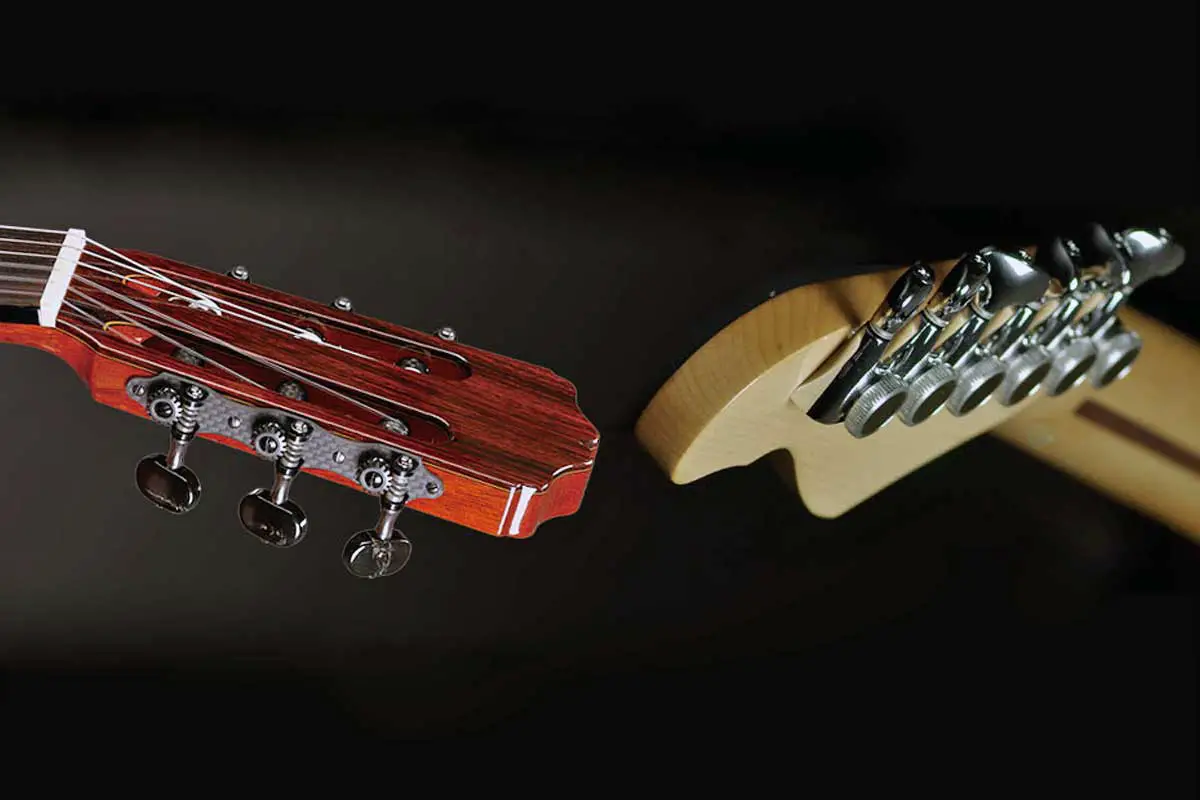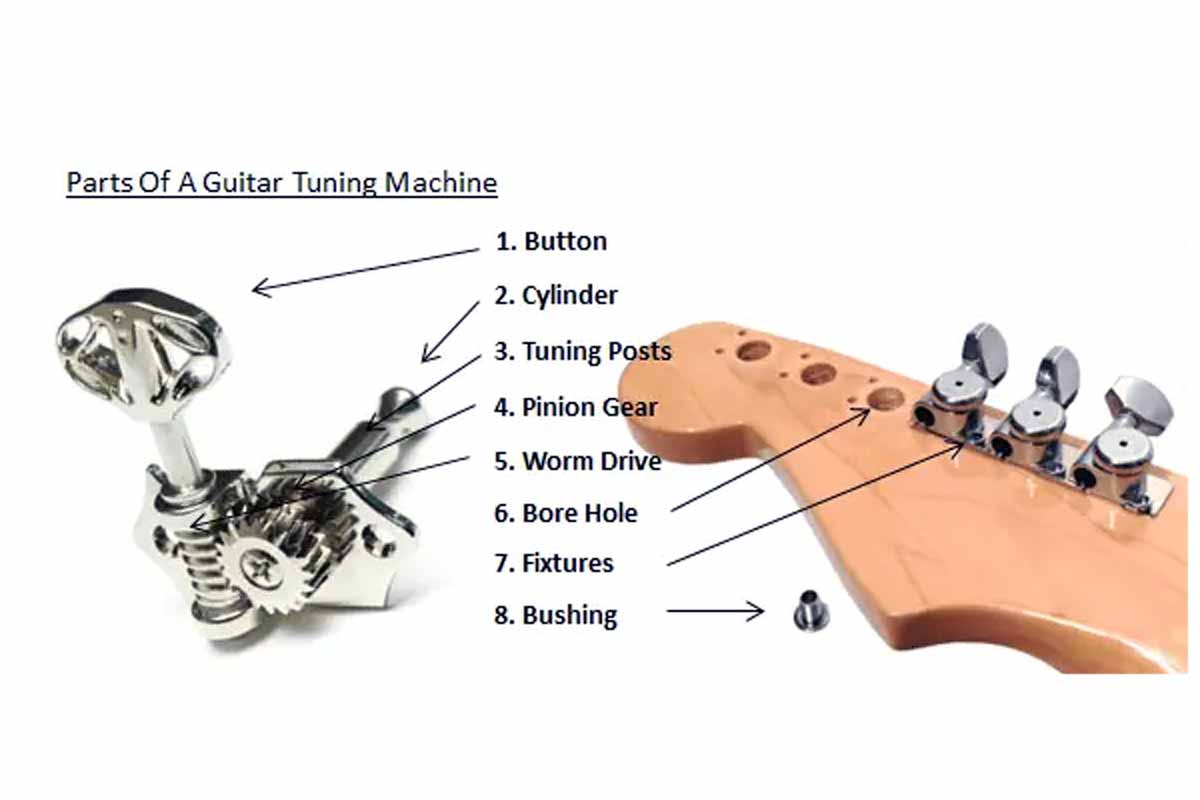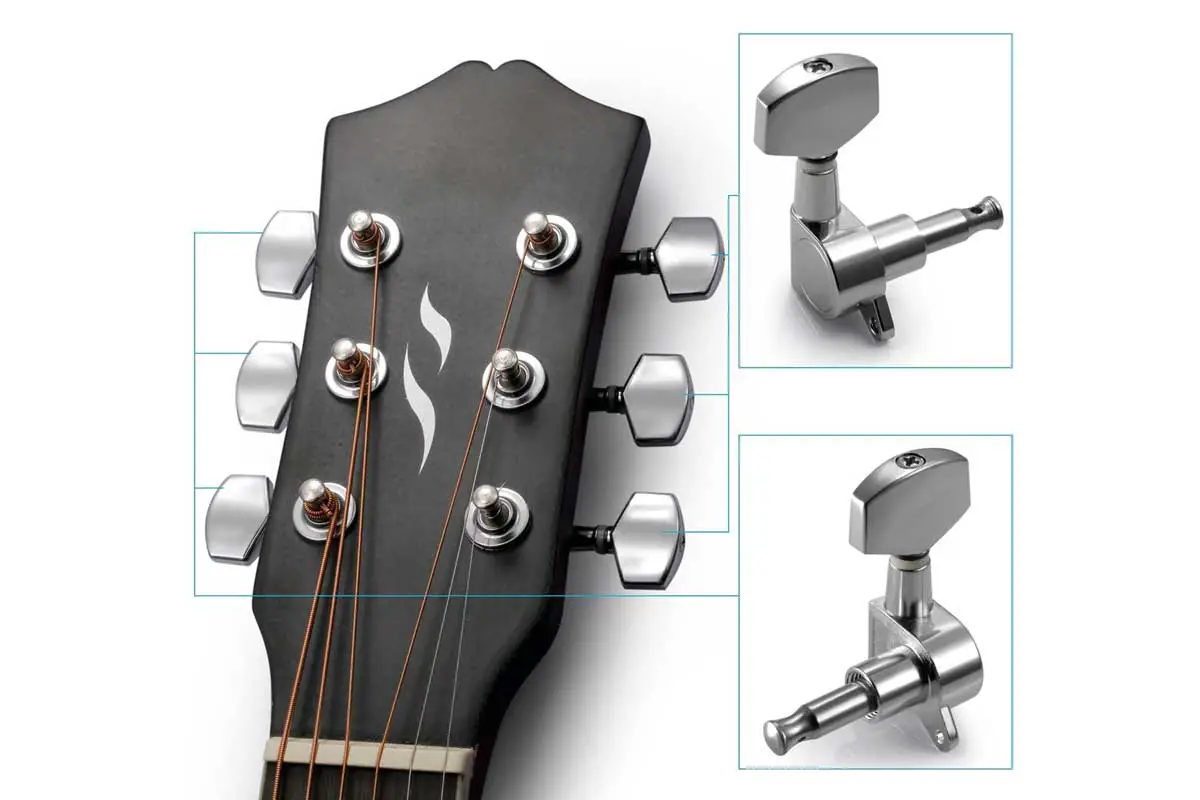Maintaining your guitar’s performance involves regular cleaning of various parts, and your guitar tuners are no exception. These small but vital components are responsible for keeping your strings in tune, yet they often accumulate dirt and debris from frequent handling and environmental factors. Over time, this buildup can affect their functionality, leading to tuning instability and making it harder to turn the tuning keys. In this article we cover how to clean guitar tuners to not only preserves their appearance but also safeguards their operation and the overall sound of your instrument.
Cleaning your guitar tuners is a straightforward process that doesn’t require special tools or extensive expertise. It’s a matter of routinely checking for any signs of grime or corrosion and taking action to remove these impurities without causing damage to the tuners or the guitar headstock. By keeping the metallic and plastic parts of the tuners free from dirt, you prevent potential wear and tear, allowing for a smoother tuning experience and prolonging the life of your guitar.

Understanding Guitar Tuner Maintenance
Proper maintenance of your guitar tuners is essential for preserving their functionality and longevity. This section will guide you through the different types of tuners, common issues they face, and what tools and supplies you’ll need to clean and maintain them effectively.
Related: Guitar tuning basics
Types of Guitar Tuners
Guitar tuners, also known as tuning machines, come primarily in two types: open and sealed. Open tuners have exposed gears, which can accumulate dust and grime more easily, whereas sealed tuners are enclosed, providing better protection against the elements but still requiring periodic maintenance.
Common Issues in Tuners
Over time, tuners can suffer from issues like corrosion, damage, or the buildup of dirt, which can impede their operation. It’s important to routinely inspect your tuning hardware to ensure there’s no excessive wear or accumulation of foreign matter that can affect tuning stability and ease of use.

Tools and Supplies Needed
To maintain your guitar tuners, you’ll need a few basic tools and supplies:
- Cloths: A soft, lint-free cloth for cleaning the tuner’s body.
- Polishing: Suitable polish for metal parts if the tuners are not sealed.
- Cleaning Kit: A dedicated guitar cleaning kit often includes the right type of cleaners and cloths.
- Lubrication: A small amount of lubricant can be used on open-type tuning machines to ensure smooth operation.
- Solvent: A mild solvent can help remove stubborn gunk, but be careful to avoid contact with the guitar’s finish.
Each tool and supply has its specific purpose and should be used cautiously to avoid any potential damage to your guitar’s tuners. Regular cleaning and lubrication will help keep your tuning machines in optimal condition, providing reliable tuning for your performances and practice sessions.
Step-by-Step Cleaning Process
Maintaining your guitar tuners is essential for ensuring smooth tuning stability and longevity of the hardware. This section takes you through everything from pre-cleaning preparation to the finishing touches, keeping your tuning pegs both visually appealing and functionally sound.
Preparatory Steps
Before beginning the cleaning process, detach your guitar strings to provide unhindered access to the tuner housing. Ensure your work area is clean, and lay down a soft cloth to protect the guitar’s finish. Assemble your materials, including naphtha for cleaning, a microfiber cloth, and the necessary lubricants.
Cleaning the Tuner Housing
Mix warm water with a drop of dish soap to create a gentle cleaning solution. Dip a soft toothbrush into the solution and carefully scrub the tuner housing to remove any accumulated debris. You can apply naphtha for a more thorough cleaning of stubborn grime or buildup. Wipe off moisture and remaining dirt with a dry cloth, ensuring the metal parts are completely dry to avoid any potential damage from corrosion.
Lubricating the Gears
Once the tuner housings are clean, apply a small amount of lubricant, such as tri-flow or vaseline, onto the gears. These substances prevent wear by minimizing friction. Work the lubricant into the gears by rotating the tuning pegs. This ensures the entire gear mechanism is evenly coated, reducing the likelihood of stiff tuning. Use sparingly to prevent attracting more dirt and debris.
Polishing and Finishing Touches
For a shinier appearance, use a small amount of metal polish on the tuner’s exterior surfaces. Apply the polish with a microfiber cloth, then buff to a high shine. If desired, a light application of paste wax can protect the metal and keep it looking polished longer. Finally, restring your guitar, being careful not to over-tighten the strings, as this can add undue stress to your freshly maintained tuners.
Other Guitar Maintenance Articles
| Component | Related Articles |
|---|---|
| Body Finish | How to clean your guitar’s body |
| Bridge & Tailpiece | How to clean a guitar bridge |
| Fingerboard | How to clean your fretboard |
| Frets | How to clean your guitar frets |
| Pickups | How to clean pickups |
| Pots | How to clean guitar potentiometers |
| Strings | How to clean guitar strings |
| Tuners | How to clean guitar tuners |
Frequently Asked Questions
Proper maintenance of your guitar tuners can significantly enhance their performance and longevity. The following questions address common concerns regarding the cleaning and care of these components.

What is the best way to remove rust from guitar tuners?
To remove rust from guitar tuners, apply a small amount of rust remover or white vinegar to a soft cloth and gently rub the affected areas. Avoid any contact with the guitar’s finish to prevent damage.
Can sealed guitar tuners be lubricated, and if so, how?
Sealed guitar tuners are generally designed to not require lubrication. However, if you notice stiffness, applying a drop of non-invasive lubricant, like a synthetic oil designed for delicate instruments, can improve their movement.
What are effective methods for cleaning oxidized guitar hardware?
To clean oxidized guitar hardware, including tuners, use a polishing cloth with a bit of metal cleaner that’s safe for the specific hardware finish. For tougher oxidation, very fine steel wool (#0000) may be used carefully to avoid scratching much like when cleaning frets.
What lubricant should be used for maintaining guitar tuners?
Use a lubricant specifically formulated for musical instruments, such as a light machine oil or a product like Hosa F5 Fretboard Cleaner and Conditioner. It can help to keep the moving parts operating smoothly without causing harm to the tuners or the guitar.
Is it necessary to lubricate guitar tuners, and why?
It is necessary to lubricate guitar tuners occasionally to ensure smooth tuning action and prevent wear over time. Proper lubrication can also protect against rust and corrosion, making tuning more precise and less strenuous on the tuners.
How can you clean and maintain vintage guitar tuners?
Clean vintage guitar tuners with caution, using a dry, soft brush or cloth to remove dust and debris. For lubrication, sparingly apply a suitable lubricant like a light machine oil, taking extra care not to disturb the integrity of the tuner’s aging components.
